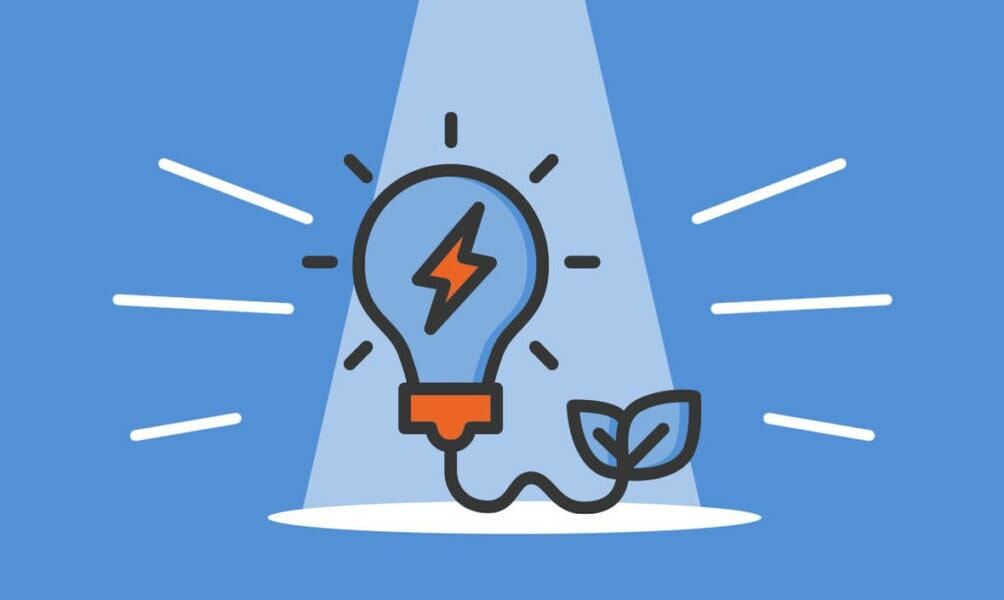For over 20 years, Sequoya Cross has been a groundbreaking business leader, thriving in a male-dominated field. From solar power companies tobattery ...
Clement Feng’s Guide to Energy Independence for Businesses
Written by: Esther Strauss
Esther is a business strategist with over 20 years of experience as an entrepreneur, executive, educator, and management advisor.
Published on July 19, 2024

Clement Feng is vice president of product management for Briggs & Stratton Energy Solutions, a global leader in the design and manufacturing of standby generators and battery backup storage systems that deliver energy resilience, energy efficiency, and peace of mind to homeowners and businesses. Clement is an experienced executive with expertise in residential and commercial backup power and clean energy.
For more than two decades, he has helped educate homeowners and business owners to achieve energy independence and improve resilience in managing power outages. With an above-average hurricane season and record-breaking heat waves burdening grids across the US, power outages are increasing and, on average, last 5.5 hours. However, some outages can go on for days or even weeks, creating chaotic disruptions for families and significant financial losses for businesses.
Feng holds a BA degree from Stanford University in Chemical Engineering and an MBA from the University of Chicago Booth School of Business and is a national voice on how businesses can stay open and operating, even when power is out across the area. He is an advisor on how these systems work, the costs and available federal incentives, how business owners can determine the type and size unit they need to avoid a power outage, and overall, what to expect when using a standby generator or a battery system that stores energy for users to draw from whenever it’s needed.

Evolution of Energy Solutions
SBS – Can you share how Briggs & Stratton Energy Solutions has evolved over the years to address the increasing demand for energy resiliency and efficiency?
Clement – Briggs & Stratton is a 115-year-old US-based company with a long history of providing power and engines for many types of products. We’re probably best known for the small engines that power lawnmowers, pressure washers, and generators, and we are found in an estimated 80% of all homes in the country. Today, we are a technology-oriented company that’s focused on powering the products for people’s lives. Our Energy Solutions business provides standby power generators as well as battery storage systems that provide backup power and energy resilience.
Standby Generators vs. Battery Backup Systems
SBS – What are the key differences between standby generators and battery backup systems, and how should a business decide which option is best for them?
Clement – Both types of power systems offer their unique advantages. Standby generators have been around for decades and can provide large amounts of power nearly indefinitely as long as they have fuel, typically natural gas or propane. Battery backup systems, on the other hand, have to be periodically recharged with another electrical source, often solar, the utility grid, or a generator. Battery system advantages include silent operation, no exhaust, and minimal maintenance requirements.
Future of Clean Energy
SBS – How do you foresee the future of clean energy impacting the backup power industry?
Clement – The adoption of solar energy systems is increasing rapidly in our country, and that has driven increasing installations of battery storage systems as well. In addition, state and local governments, as well as utility companies, have been offering incentives to install solar and storage. These technologies provide homeowners with resilience from power outages as well as electricity cost savings.
Market Trends
SBS – Can you discuss any significant trends in the energy solutions market that entrepreneurs should be aware of?
Clement – Electric rates are consistently going up, and utility companies are enacting time-of-use tariffs that make power more expensive at different times of the day. In almost all regions, utility companies are challenged to supply more power generation capacity and the transmission and distribution infrastructure necessary to deliver power to their customers. To protect their homes and businesses from the rising costs of power, entrepreneurs can become more self-sufficient, produce their own power or buy it when costs are low, and store it in their battery system for later use. In this way, they obtain protection from power outages while arbitraging utility rates.
Technological Advancements
SBS – What role does technology play in the development and operation of modern standby generators and battery systems?
Clement – Most modern standby generators and battery storage systems are monitored and controlled by user-friendly software. At Briggs & Stratton, we have developed EnergyTrak, a mobile monitoring app that delivers real-time status and updates and intuitive controls to enable backup power when desired. The software also allows over-the-air firmware updates to keep the system as safe, secure, and code-compliant as possible.
Transition Challenges
SBS – What challenges do businesses typically face when transitioning to backup power solutions, and how can they overcome them?
Clement – Installing a backup power solution can be somewhat complicated as the utility meter needs to be disconnected, the equipment installed, building permits obtained, and in the case of a generator, a fuel source needs to be connected. Plus, the electrical distribution panel may need to be upgraded or replaced. To take the guesswork out of the project, we recommend working with an authorized dealer who has licensed electricians trained to install the systems. Installers can be found at energy.briggsandstratton.com.
Planning for Energy Independence
SBS – In your opinion, what is the most critical aspect for businesses to consider when planning for energy independence?
Clement – Businesses and homeowners should have a good idea of what they want to keep powered in the event of a power outage. Simpler, less expensive systems can be installed to back up only essential business equipment like security systems, internet service, and lighting. For homeowners, prioritizing kitchen appliances, e.g., refrigerator, stove, and lighting, is typical. If desired, customers can install a whole-home backup system to provide power to all circuits, and life would continue uninterrupted.
Investing in Clean Energy
SBS – What advice would you give entrepreneurs looking to invest in clean energy technologies?
Clement – Entrepreneurs interested in clean energy should develop a good understanding of their local environment. Utility rates vary greatly from one region to another, and that affects the ROI of any energy project. Further, there are varying types and amounts of incentives available. No two locations are exactly alike, as programs come in the form of tax credits, state and local rebates, and, oftentimes, utility company-sponsored incentives.
Professional Background
SBS – How has your background in chemical engineering and business influenced your approach to product management at Briggs & Stratton?
Clement – Product management operates at the intersection of what is technically feasible with what customers want. Having worked in home improvement and energy products for most of my career, I’ve enjoyed working with R&D teams to bring products to market that address obvious and not-so-obvious consumer pain points. The best products are those that improve our daily routines and bring convenience to our work and home lives.
Decade Outlook
SBS – How do you see the role of energy solutions evolving in the next decade, particularly for small to medium-sized businesses?
Clement – It’s an exciting time for businesses of all sizes to rethink the way they power their operations. As electrification takes hold in nearly everything that consumes power, we find ourselves much more sensitive to having a reliable energy supply. Controlling our own destiny is fundamental to successful businesses, and achieving energy independence is a step entrepreneurs can take in that effort.
Subscribe to Our Newsletter
and gain insider access to cutting-edge business insights and trends.
Featured Resources

Sequoya Cross Leads the Way in Renewable Energy and Gender Equality
Published on March 5, 2024
Read Now

James Hill’s Unique Approach to European Energy Challenges
Published on December 13, 2023
In a time when the global energy landscape is undergoing a profound transformation, James Hill, the CEO of MCF Energy, emerges as a key architect of ...
Read Now

How to Start a Renewable Energy Company
Published on June 5, 2023
Here are the most important factors to consider when you want to start a renewable energycompany: Permits and licenses — Obtain the necessary ...
Read Now
Comments